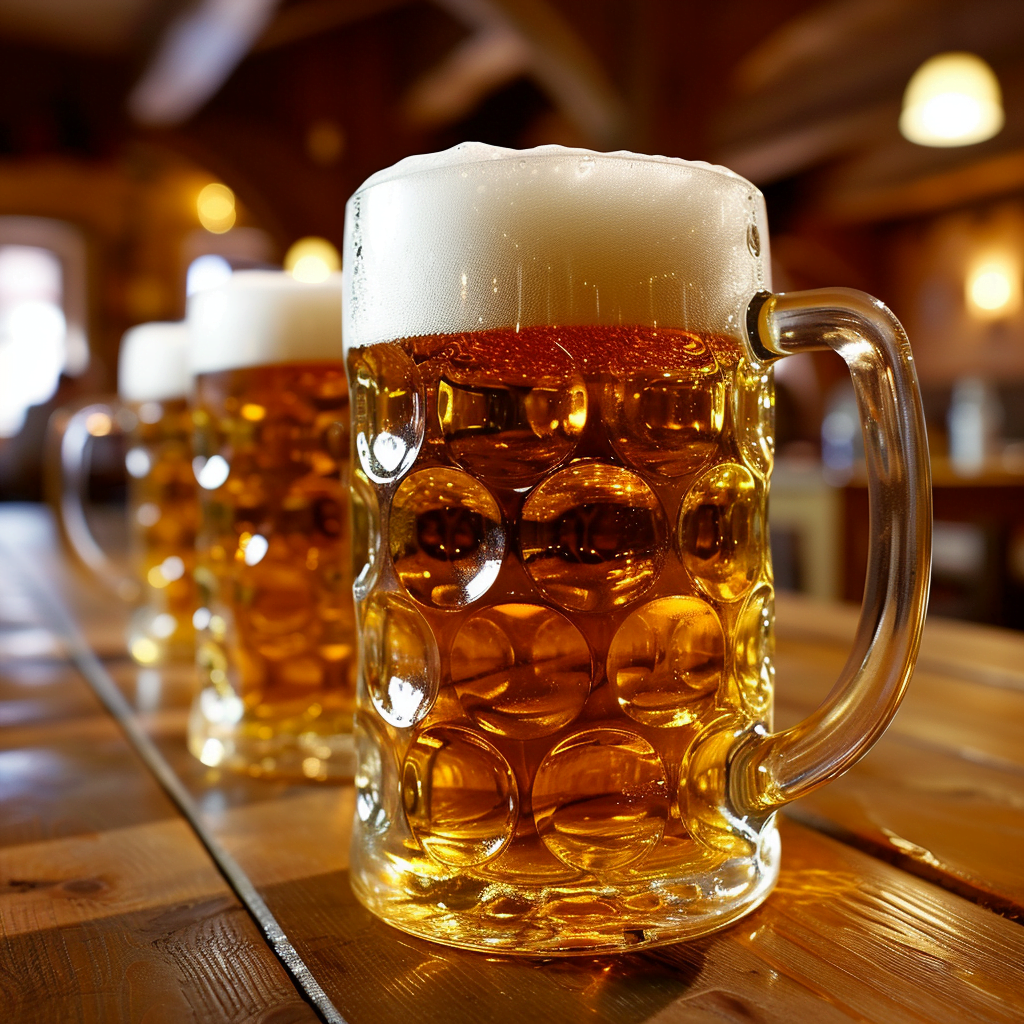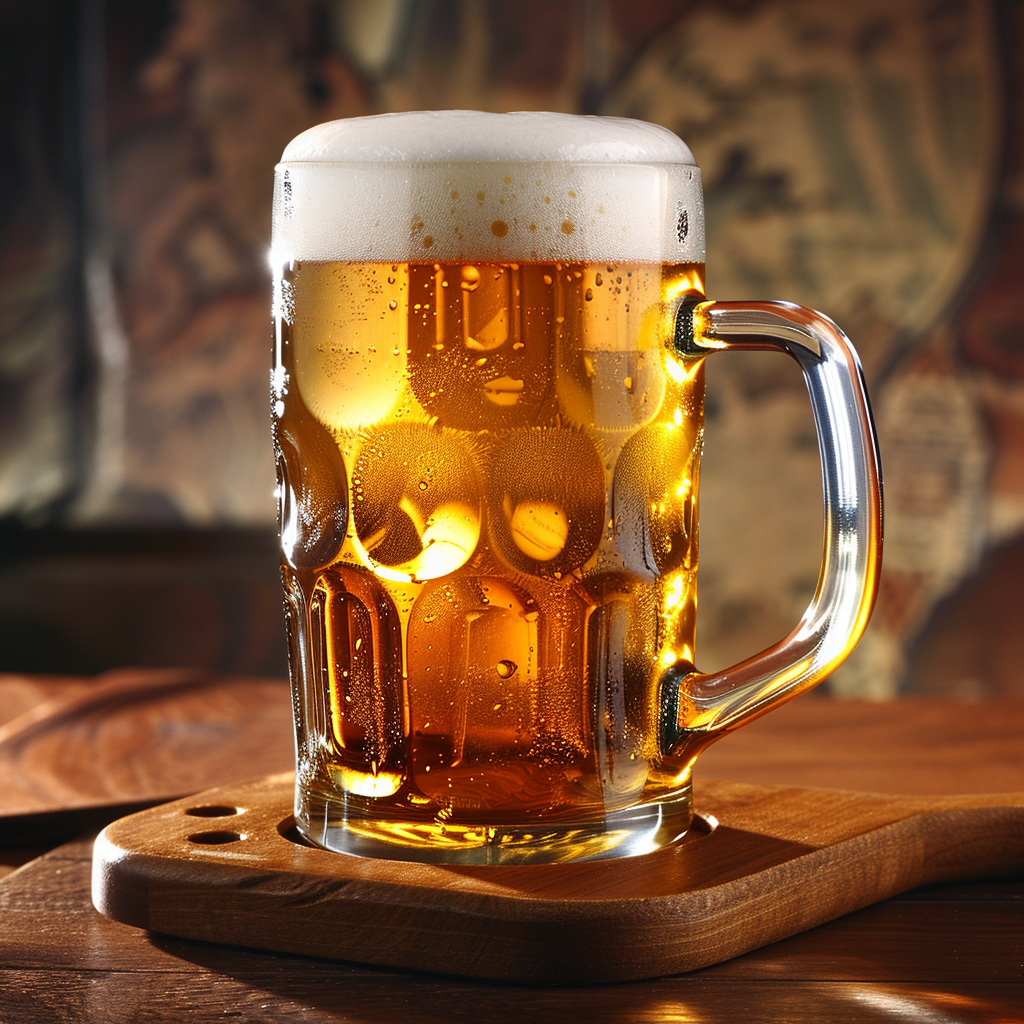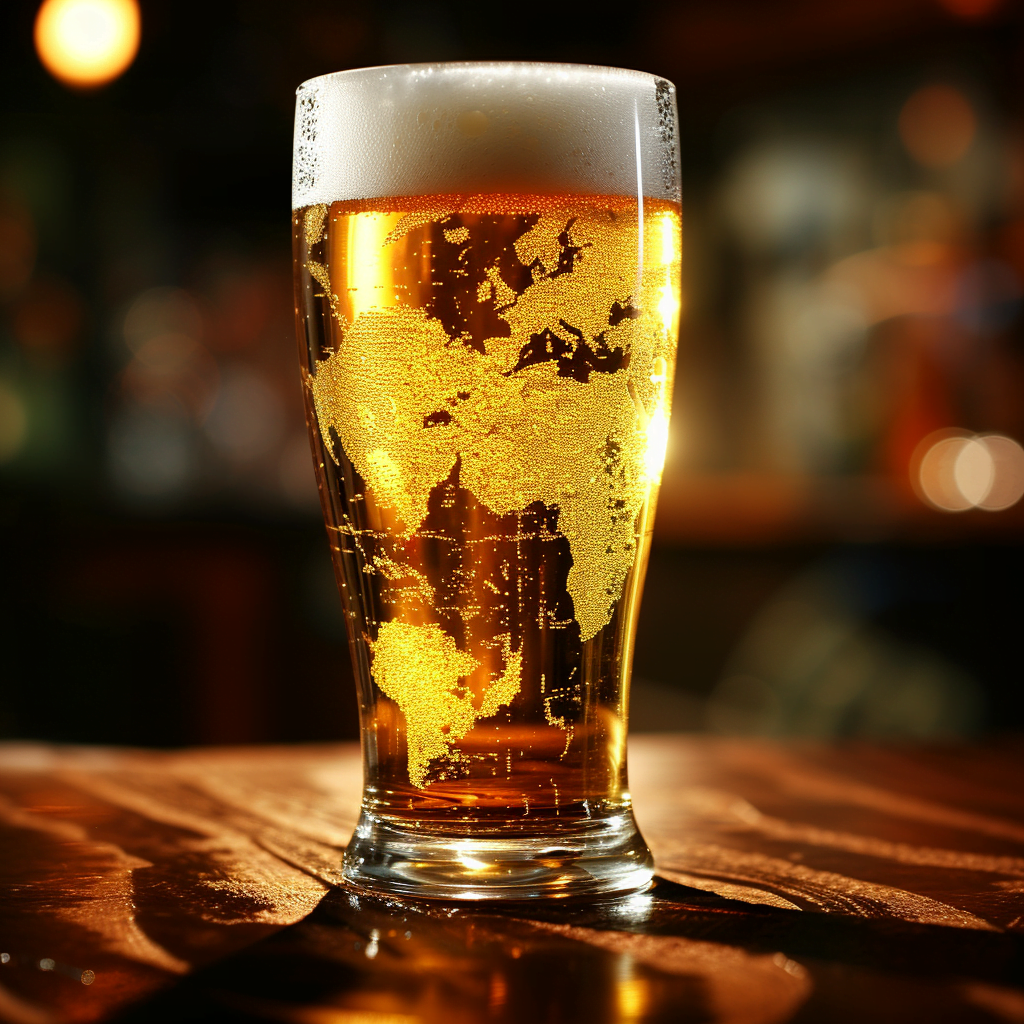Beer is one of the most popular alcoholic beverages globally, with over 190 billion liters produced worldwide each year. But which country produces the most beer overall? This in-depth article will examine global beer production data to determine the top beer-producing countries in the world. We’ll look at total production volumes as well as production per capita. The origins and histories of beer will also be explored in major beer-producing nations.
Global Beer Production by Country
When it comes to total overall beer production, China is the undisputed leader, producing a massive 350 million liters per year according to 2020 production data. For reference, this is over double the United States, which ranks #2 in total beer production at 205 million liters annually.
China’s gigantic beer industry is related to its large population of over 1.4 billion people as well as rising incomes which have increased the demand for beer, both among the growing middle class and blue-collar workers. Various beer styles have become popular nationwide, from light lagers to darker beers.
The top 5 beer-producing countries worldwide currently are:
- China – 350 million liters produced annually
- United States – 205 million liters
- Brazil – 140 million liters
- Germany – 95 million liters
- Russia – 85 million liters
Brazil’s high beer production is related to the popularity of beers like Skol, Brahma, and Antarctica in the country. Meanwhile, Germany and Russia have long brewing traditions and remain major producers today.
Some other notable beer producers worldwide include Mexico, Japan, and the United Kingdom, each producing over 40 million liters annually. Poland, Ukraine, and the Netherlands are mid-size producers between 20-30 million liters per year.
Below is a table summarizing the top 10 beer-producing countries and their total annual beer production volumes:
| Rank | Country | Beer Production |
|---|---|---|
| 1 | China | 350 million liters |
| 2 | United States | 205 million liters |
| 3 | Brazil | 140 million liters |
| 4 | Germany | 95 million liters |
| 5 | Russia | 85 million liters |
| 6 | Mexico | 60 million liters |
| 7 | Japan | 50 million liters |
| 8 | United Kingdom | 42 million liters |
| 9 | Poland | 40 million liters |
| 10 | Ukraine | 30 million liters |
So while China’s massive beer production is around double the United States and nearly quadruple Brazil’s, it’s important to understand how population sizes factor into these totals.

Beer Production Per Capita by Country
When looking specifically at beer consumption per capita, the rankings of countries change notably. While China leads for total production volume, it is European countries that top the list for per capita beer consumption.
The country that consumes the most beer per capita is the Czech Republic, with per capita beer consumption of 140 liters per year based on 2021 data. That’s nearly 7 gallons for every man, woman, and child in the country!
Other European countries with very high per capita beer consumption include:
- Austria – 108 liters per capita
- Germany – 105 liters per capita
- Poland – 100 liters per capita
- Ireland – 98 liters per capita
- Romania – 88 liters per capita
In these countries, regularly drinking beer is very common and ingrained in the culture. Beer may be enjoyed on a daily basis, with family meals, at pubs, or during sports matches.
In China, despite having the world’s largest total beer production by far, per capita beer consumption is actually much lower, at just 33 liters annually. This means the average Chinese person drinks less than 2 gallons of beer per year. Therefore, the higher total production is related to the giant population size.
One reason China’s per capita beer consumption lags countries like the Czech Republic and Germany is that stronger rice wines have traditionally been more popular and common. Beer has only surged in popularity in the last few decades.
Below is a table comparing China and the Czech Republic for total beer production vs. per capita consumption:
| Country | Total Beer Production | Per Capita Consumption |
|---|---|---|
| China | 350 million liters | 33 liters |
| Czech Republic | 21 million liters | 140 liters |
This shows that while China produces over 16 times more total beer, the Czech Republic consumes over 4 times more per person!
Outside of Europe, the leading countries for per capita beer consumption are Namibia (108 liters), Australia (98 liters), and New Zealand (91 liters).
History and Culture of Beer in Top Producing Nations
To better understand the modem beer industry, it helps to look at the origins, histories, and evolution of beer drinking culture in some of the leading beer-producing countries.
Germany
Germany has a long, influential history when it comes to beer. By the 16th century there was already a beer purity law in place called Reinheitsgebot which stipulated that beer could only contain water, barley, and hops. This law is still followed today in the production of most German beer.
Many of the most popular styles of beer originally came from Germany, including:
- Lagers – first brewed in the 15th century with bottom-fermenting yeast
- Pilsners – originated in Bohemia, now the Czech Republic
- Weizenbiers/Weissbiers – wheat beers that use ale yeast
- Kölsch – pale, top-fermented beer from Cologne region
- Oktoberfest beers – amber lagers brewed for annual festival
Beer is often socially enjoyed in beer halls, during fairs and festivals, with sports matches, and as part of family meals. Annual beer consumption per capita is around 105 liters.
Czech Republic
The Czech Republic also has a storied beer history, particularly centered around its famed pilsners. The city of Plzeň has claims of first developing the golden pilsner beer style in 1842, which then spread in popularity across Europe.
Some facts about Czech beer culture include:
- There are over 50 beer styles brewed, besides just pilsners
- Beer is typically very affordable, costing less than bottled water
- Beer halls and taverns are found throughout cities and towns
- Czechs drink the most beer per capita globally (140 liters/year)
- Czech lagers like Pilsner Urquell remain popular worldwide
China
The history of beer in China reveals an interesting evolution over recent decades. While rice wines have traditionally been more common, beer has risen in popularity since the 1970s and 80s.
Some factors in the growth of beer in China:
- Beer was originally promoted as “healthier” than Chinese rice wine
- Big state-owned breweries like Tsingtao and Yanjing modernized production
- Increased advertising and marketing for beer brands
- Rising middle class with more disposable income
China’s beer industry has grown massively to now be the largest in the world. Major beer companies are still large commercial operations like Tsingtao or China Resources Breweries. However, China has over 1,000 smaller brewpubs and craft breweries gaining popularity.
Per capita consumption still lags Europe but has risen to 35 liters per year. Beer has become the alcoholic beverage of choice with the younger generation.
United States
The United States has seen several major evolutions in its beer history:
Colonial Era: Early American brewing mimicked styles from England and Germany using ingredients like spruce due to lack of resources.
1800s: Massive influx of German immigrants brought lager brewing techniques. Brands like Pabst, Schlitz, and Miller thrived by the late 1800s.
Post-Prohibition: Light lagers dominated the 20th century after Prohibition ended, led by Anheuser-Busch and other major breweries. Beer became more commercialized and advertised as for the working class.
Craft Beer Era: The number of craft breweries exploded starting in the 1980s. There are now over 6,500 craft breweries operating, with IPAs as the most popular style. The U.S. beer market has become more localized.
The beer culture varies from cheap mass-market beers like Bud Light to a thriving craft beer scene focused on unique ingredients and higher quality. America produces the most beer styles of any country. Per capita consumption is around 75 liters annually.

Major Beer Companies and Brands
Some of the largest multinational beer companies and most popular brands originate from the leading beer-producing countries:
United States
- Anheuser-Busch (Budweiser, Bud Light, Michelob, Busch)
- MillerCoors (Miller Lite, Coors Light, Blue Moon, Leinenkugel)
- Samuel Adams, Sierra Nevada – major craft breweries
- Heineken USA, Constellation Brands – import/craft brands
China
- Tsingtao – most popular Chinese beer, originated in port city of Qingdao
- Yanjing – another leading commercial beer based in Beijing
- CR Snow – beer brand of China Resources Breweries, #1 brewer in China
Netherlands
- Heineken – second largest beer company globally, flagship brand is Heineken lager
- Amstel – major Dutch beer brand founded in 1870, now owned by Heineken
- Grolsch – popular pilsner beer in a distinctive swing-top bottle
- Brand – an economical Dutch pilsner beer with around 30% market share in Netherlands
Germany
- Beck’s – very widely distributed German beer brand, known for its green bottles
- Paulaner – major Bavarian brewery headquartered in Munich, produces Oktoberfest beers
- Warsteiner – large family-owned German brewery, over 400 years old
- Weihenstephan – world’s oldest continuously operating brewery, makes weissbiers
- Spaten – another major Bavarian brewery, pioneering lagers and Oktoberfest styles
Brazil
- Skol – one of the most popular beer brands globally, light lager style
- Brahma – the second most popular beer in Brazil after Skol
- Antarctica – another leading Brazilian beer brand, known for its advertising
- Nova Schin – surpassed Antarctica as the #3 Brazilian beer brand
Mexico
- Corona – flagship Mexican lager, leading imported beer in the United States
- Modelo – parent company of Corona, also brews Modelo Especial, Victoria, and Pacifico
- Tecate – another very popular Mexican lager brand
- Dos Equis – a pale lager sometimes marketed as a German-style beer
United Kingdom
- Guinness – internationally renowned Irish dry stout, iconic brewery brand
- Bass – major English ale brand established in 1777
- Fuller’s – leading name for British ales, IPAs, porters
Beer Consumption Trends by Country
Looking at current and recent trends provides insight into where beer consumption is growing or declining.
- Overall global beer consumption declined slightly in 2020 due to supply chain disruptions and closures in the COVID-19 pandemic.
- Beer consumption continues to grow in Asia, led by China and India. This offsets declines in more established markets.
- In the United States, consumption of mass-market light lagers has slowly declined while craft beer and imports keep growing.
- Poland’s beer consumption has grown notably in recent years, rising over 40% between 2005-2020.
- Czech Republic remains #1 for per capita consumption but consumption dipped recently.
- In Germany and Britain, beer consumption has declined more noticeably, with other beverages gaining share of market.
Predictions for the Global Beer Industry
Based on current beer production trends and data, here are some predictions for the future of the worldwide beer market:
- China will extend its lead in total beer production as population and incomes rise. More consolidation is expected among the major breweries.
- Craft beer popularity will spread beyond Western markets, increasing in Asia, South America, and Eastern Europe. Unique local styles will emerge.
- While light lagers stay popular for mass markets, millions will trade up to premium brands, craft beers, imports, and beer-wine blends.
- Africa presents major growth opportunities as beer brands target young demographics in markets like Nigeria, Kenya, or Angola. Local brands will arise.
- With climate change and droughts, the sourcing of water and raw materials may become more challenging in some regions.
- Merger and acquisition activity will increase among the beer giants, and Big Beer will buy up more craft breweries.
Conclusion
While China leads the world by far in total beer production with around 350 million liters brewed annually, countries in Europe such as Germany, the Czech Republic, and Austria have the richest beer cultures and traditions as well as the highest per capita beer consumption. Major beer styles like pilsners, lagers, and wheat beers originated in Europe. Beer is deeply ingrained in day to day life.
The United States produces the second most beer in the world at over 200 million liters per year. The U.S. beer market has rapidly diversified in recent decades to offer a huge variety of styles from light lagers to IPAs and stouts as craft breweries thrive.
So although China makes the most beer by volume, it is Western countries that have most profoundly shaped global beer history, styles, culture, and enthusiasm. But beer consumption is growing worldwide, and the future of beer will see new styles emerge and new markets develop as the world’s thirst continues.
